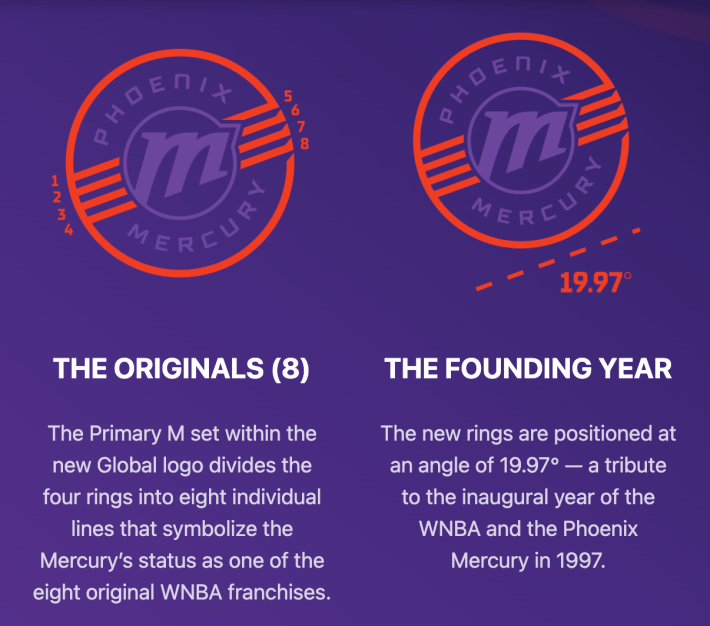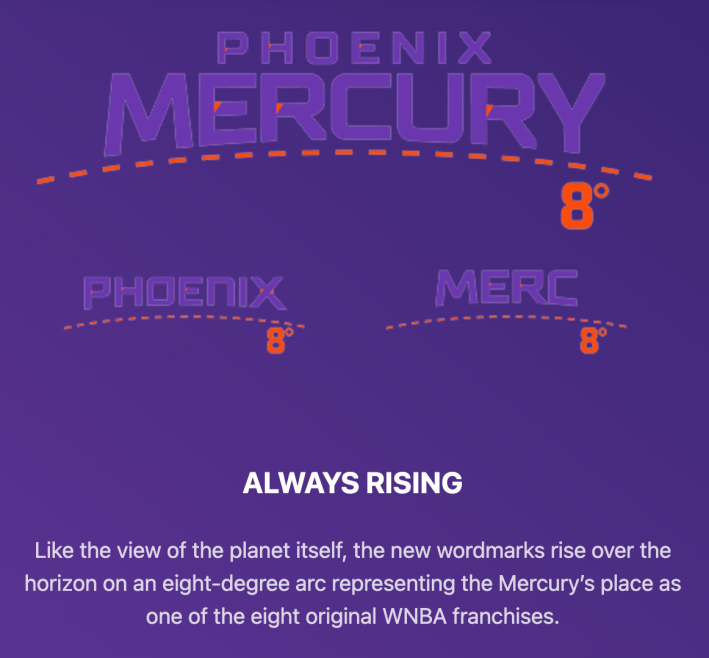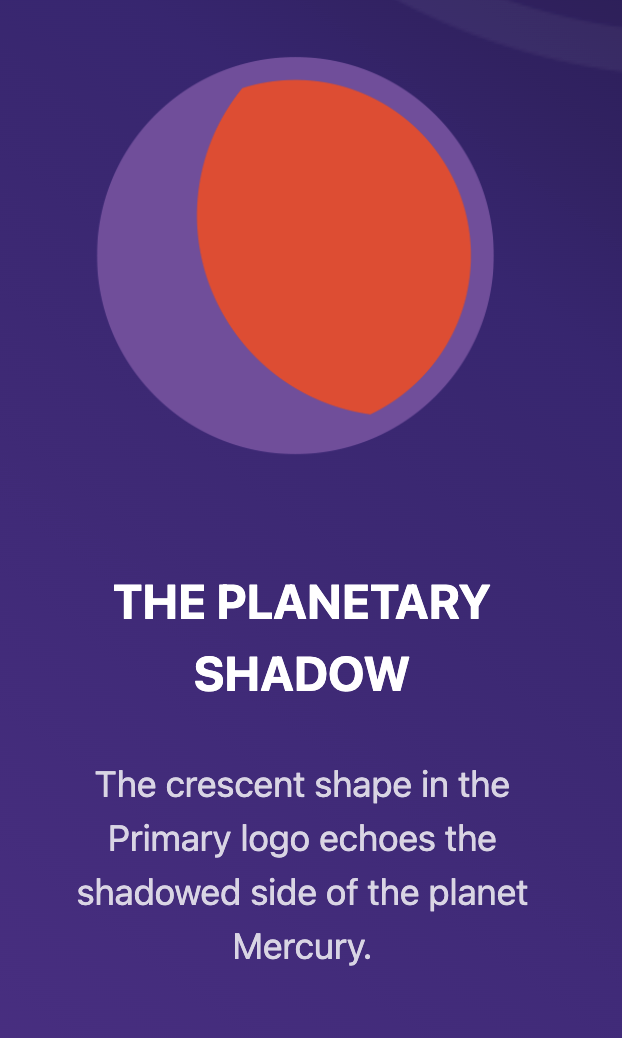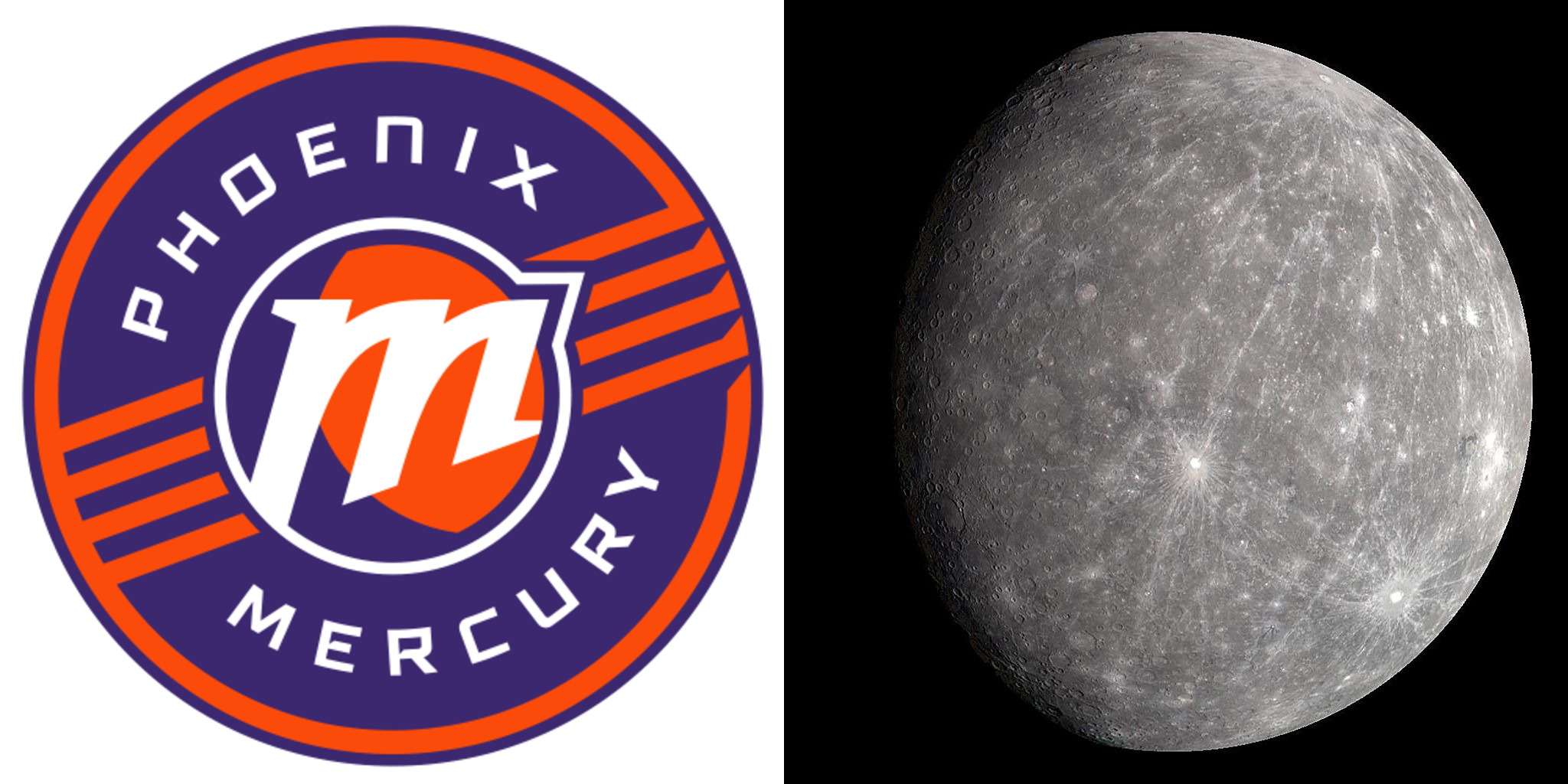The Phoenix Mercury have one of the best nicknames in sports. It's classical, referring to the Roman god of, among other things, travel, trickery, and luck. It's local, referring to the fact that Phoenix's climate makes it a monument to man's arrogance. And it is scientific, referring to one of our solar system's weirdest and most interesting planets. But until now they had a deeply unserious logo that screamed Googie by way of 1990s kitsch. One day people will mistake its nostalgia appeal for actual appeal, but you and I will not be fooled.
Ahead of the team's 30th season, they've introduced a new logo; several, in fact. They clearly wanted to distance themselves from the jet-age optimism of the old logo: Rule No. 1, according to team president Vince Kozar, was "no spaceships." It's professional and unobjectionable, in the juiceless way of modern logos. In that same vein where all design is workshopped to death, every fucking little thing has to mean something:

The Mercury say they did not engage an outside design firm to produce their new logos. But they do claim the process took nearly three years, which is billable hours–coded, and they do suffer the same need to logorrheically explain every choice, and assign deep lore to every decision, as if a sports logo is a Dan Brown puzzle to decode and not a thing that mostly just needs to look cool on merch.
I'm a big planet fan. All planets. Love 'em. I even live on one. I'm also a pedant, so I thought it might be worth my time—certainly not yours—to look at all the planetary references in the new logos and wordmarks, and see if the Mercury do justice to Mercury.

The franchise calls them "planetary rings," even though they are stacked and actual planetary rings are concentric. The planet Mercury, pretty famously, has no rings. (Perhaps a ringless logo is being saved for four-time Finals losers Connecticut. Got their asses!)
We aren't quite sure, but planetary rings likely form one of two ways: from material from the protoplanetary disk that was too close to the planet to clump into a genuine moon, or from an existing moon that breaks up due to tidal forces or a large impact. Mercury is too small and so close to the Sun that the Sun's gravitational influence and solar winds would blast any material into deeper space before it had time to coalesce. What's left is a hellish, barren, pockmarked and wind-scoured surface, totally sterile and unfit for harboring life. Perfect for a team in Phoenix.
The rings on the new logo cannot simply have a rakish tilt; they are "positioned at an angle of 19.97°—a tribute to the inaugural year of the WNBA and the Phoenix Mercury." Fine, OK. I'm not measuring them to check. But I can't help but feel like they missed a chance to pay tribute to the planet Mercury's uniqueness in this field. Mercury's axial tilt is only 0.027 degrees or so—functionally zero. It's rotational axis is nearly identical to its orbital plane, an aesthetically pleasing bit of mathematics. Earth's is 23.5 degrees; it's why we have seasons. None of those fancy seasons for Mercury, though. It is a businesslike planet, free of frippery. One might've thought that level mechanical efficiency could have been a good inspiration for a basketball team. No one asked me, though. No one ever asks me.

It's unclear where exactly the POV is supposed to be in this situation. Are we watching Mercury rise from Earth? (The planet itself is quite tough to spot, being so close to the Sun—it's only visible in the 20 or so minutes right before sunrise or after sunset, and only under specific conditions.) If we're on Earth, the arc of the horizon wouldn't be eight degrees; it'd be about 0.04 degrees to a six-foot-tall observer, appearing totally flat. In fact, to see the curve of the Earth's horizon with the naked eye, you need to get up to jet cruising altitude. For it to be eight degrees of curvature, you'd need to get up near the Kármán Line, delineating the edge of space.
Maybe we're on Mercury? (And watching the words "Phoenix Mercury" rise above the horizon? Just go with it.) Still doesn't work. The planet's smaller than ours, but plugging in the numbers doesn't result in an obviously curving horizon—only about 0.07 degrees of arc for that same six-foot-tall observer. I could calculate how far you'd have to be above Mercury to see eight degrees of arc, but I really, really don't feel like it.

OK, I feel like someone may have confused Mercury with our Moon here; there is no permanently dark side of Mercury. For a long time, astronomers thought there was—every time they were able to view Mercury, it showed the same face. But it turned out that this was because it was only possible to view the planet at all (too close to the Sun for regular observations, etc.) at the same point in its cycle.
Mercury is tidally locked to the Sun, but not in the same 1:1 way our Moon is tidally locked to us, where it always presents the same face. It's in a 3:2 resonance, rotating three times for every two revolutions of the Sun. This results in some weird situations if you found yourself a Mercurian resident. You'd see the Sun seemingly move backward in the sky at times; it might rise, then retreat, then rise again for good. On the surface of the planet, it'd take you two years to experience a full solar day.
Because a day lasts so long on Mercury, and because there are no seasons (because there's no axial tilt, remember?), it gets some pretty crazy temperature swings. During the day on the equator, it can rise to 800 degrees Fahrenheit; at night at the poles, it can drop to 280 below zero.
This led to one of my favorite sci-fi concepts, the mobile Mercurian city of Terminator, created by author Kim Stanley Robinson. He liked it so much, he's used it in multiple books. A domed city on rails, it travels forever east, staying on the terminator—the line between day and night—where the temperature is survivable. The rails expand as they heat with the dawn, eternally propelling it further, until—well, I won't spoil.
The Phoenix Terminators has a nice ring to it, though.







